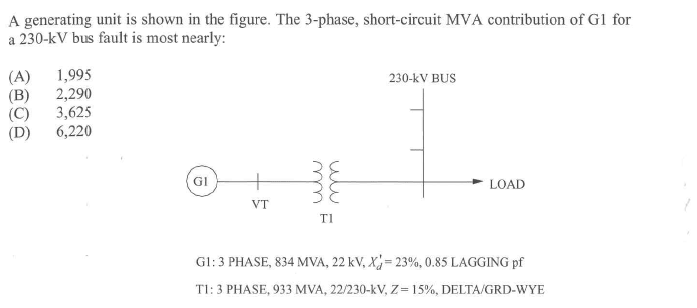Hello,
I was looking at the sample PE exam question below.


When solving the question i decided to use the XFMR Secondary voltage and MVA as my base values.
Which then required the Gen imp to be converted to the XFMR MVA base.
When doing so the first time i followed the process below:
Vbase=230kV, MVA Base=933 MVA
Ibase= MVA Base/ Sqrt(3) * Vbase
Zgen_933MVA= Zgen_834MVA * (kV old/KV_New) * (MVA new/MVA Old) = (0.23)*(22/230)^2 * (933/834)
However, after looking at the solution i see that the voltage conversion is not necessary.
If i remove the voltage conversion ratio then my answer matches the MVAsc from the solution.
Can anyone clarify when the voltage transformation is indeed applicable and touch on why its not applicable in this case?
I was looking at the sample PE exam question below.


When solving the question i decided to use the XFMR Secondary voltage and MVA as my base values.
Which then required the Gen imp to be converted to the XFMR MVA base.
When doing so the first time i followed the process below:
Vbase=230kV, MVA Base=933 MVA
Ibase= MVA Base/ Sqrt(3) * Vbase
Zgen_933MVA= Zgen_834MVA * (kV old/KV_New) * (MVA new/MVA Old) = (0.23)*(22/230)^2 * (933/834)
However, after looking at the solution i see that the voltage conversion is not necessary.
If i remove the voltage conversion ratio then my answer matches the MVAsc from the solution.
Can anyone clarify when the voltage transformation is indeed applicable and touch on why its not applicable in this case?





















